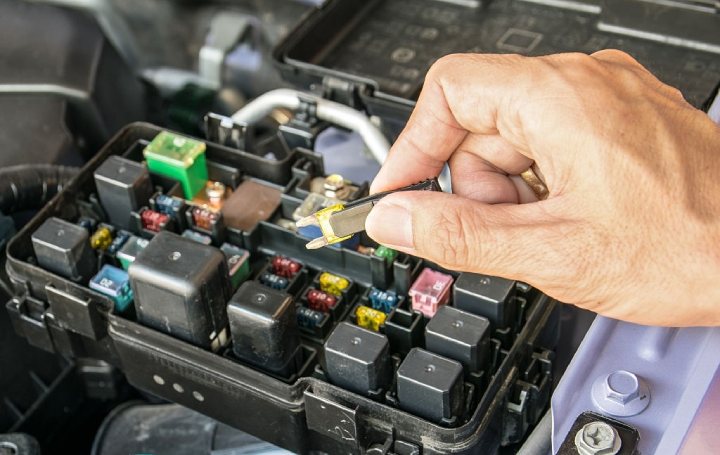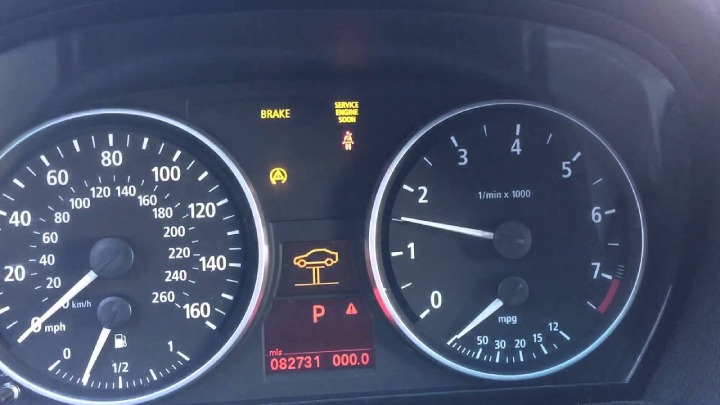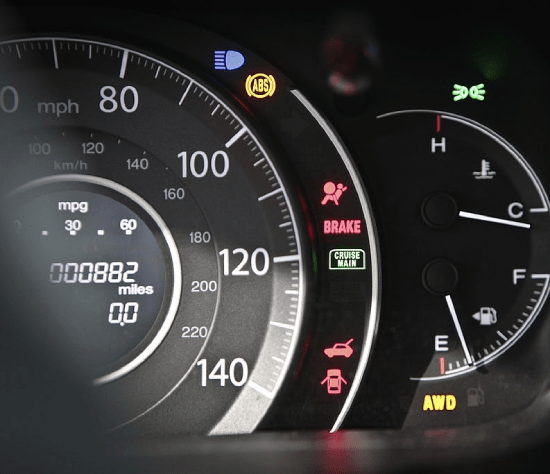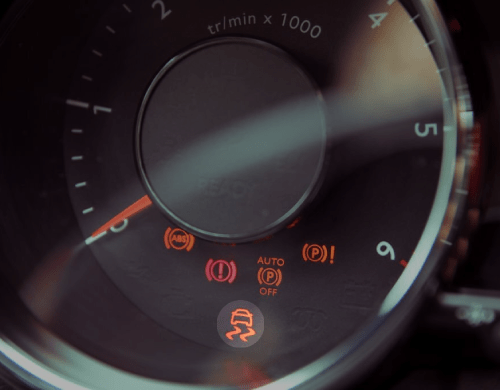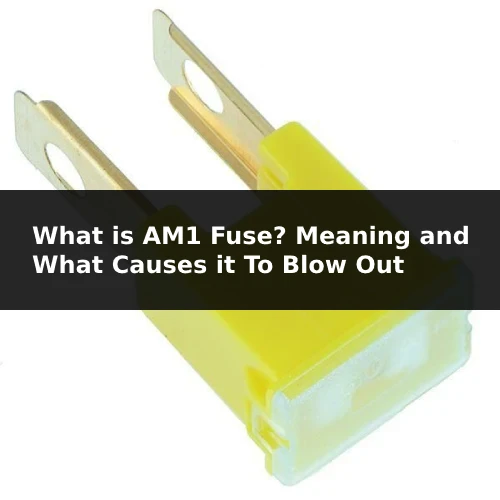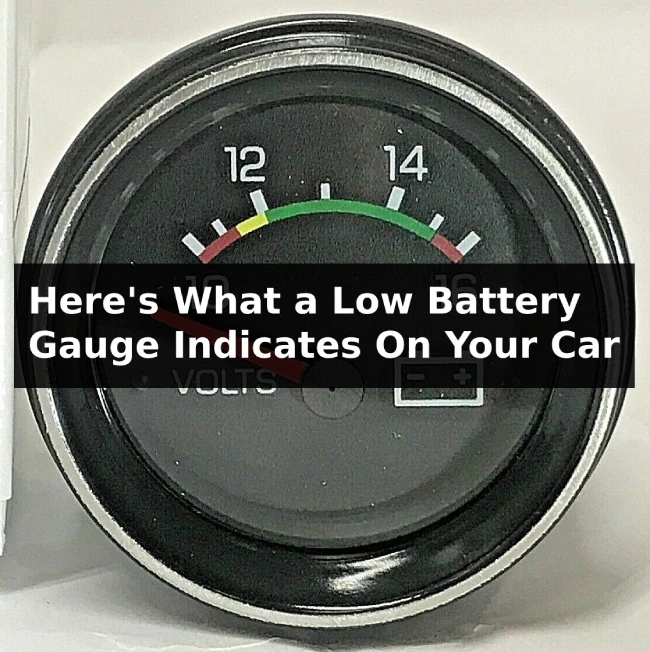Hazard lights are a pair of intermittent flashing indicators that flash in unison. You turn them on when you want to warn other drivers of a temporary mechanical failure or obstruction on the road. Hazard lights are activated and deactivated by pressing a button with a red triangle printed on it.
The use of hazard lights when driving varies from country to country or region to region. But like other electrical systems in your car, they, too, can develop faults. In such cases, the hazard lights may blink even after locking or parking your vehicle.
But what causes the hazard lights to blink when you lock or turn off your car, and how do you turn them off in such a situation? Do they drain the battery? Read on for answers to these questions.
What Are the Causes of Hazard Lights Blinking When a Car Is Locked/Off?
Many car owners experience hazard lights blinking when the car is locked. Let’s start by listing the possible causes before getting into the details of each.
- Faulty flasher relay
- Corrosion issue in one of the sockets
- Shorted-out turn signal switch assembly
- Faulty alarm module
- Problem/ short in the remote
- Lousy ground connection in your car’s accessories
- Disconnected siren
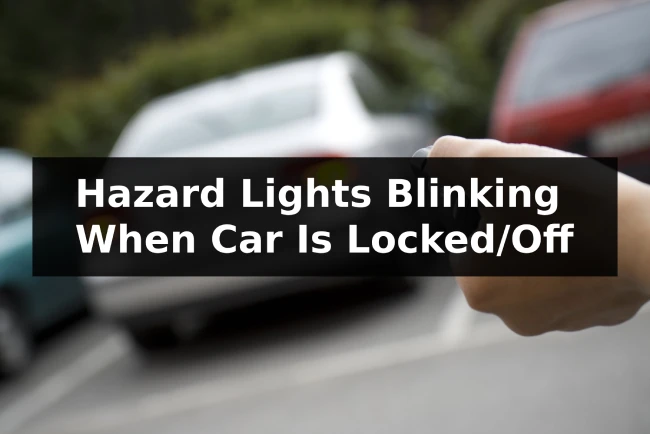
01. Flasher Relay Going Bad
A flasher relay or turn signal relay is the electrical component that controls the turn signals or hazard lights. It is responsible for turning them on and off when you flick a switch on the dashboard. This unit switches on and off continuously, producing the clicking sound you hear in the cabin.
The flasher relay is often located inside the junction box, but that may vary depending on the vehicle’s make and model. If it develops a fault, the flasher relay may start acting up. Instead of responding to your commands, it may keep the hazard lights flashing. The turn signals or hazard lights remain off even when you flick the switch to turn them on.
Another sign of a faulty flasher relay is the failure of other lights. Most electrical systems in your car are interconnected. That means a problem it causes is inherited by the other due to electrical shorts or open circuits.
02. Corrosion Issue in One of The Sockets
Tail light housing in most cars is designed to be waterproof. However, water can still find its way in and cause damage. The bulb sockets are prone to corrosion, especially if they are exposed to water for some time.
Corrosion can short the electrical circuits, keeping the hazard lights on when you turn off or lock your car. Your vehicle has a monitoring system that keeps track of resistance in the electrical systems. A fault code will be stored if there is a short circuit due to corrosion or any other cause. It may help first to diagnose the vehicle to find out if that is the case before checking other components.
03. Shorted Out Turn Signal Switch Assembly
The turn signal switch assembly performs a crucial role in your car. It receives an input command from you when you press the lever. Depending on the direction selected, it instructs the flasher relay to turn right or left rear and front lights on.
Mechanically, the turn signal switch assembly keeps feeding the flasher with the signal until you reverse the steering wheel from the turn direction indicated. If it is faulty, the turn lights fail to automatically turn off once you have made the turn.
A shortened turn switch assembly may send mixed signals to the flasher relay, making it turn the emergency lights on. That can happen after or before locking the car, depending on the nature of the electrical short circuit experienced.
Related content: What Is The Meaning Of The Car And Lock Symbol?
04. Faulty Alarm Module
An alarm module receives signals from various sensors installed in the vehicle to know when a break-in is attempted. If this unit is faulty, it may trigger false alarms. It may also fail to sound the siren but only flashes hazard lights.
Other factors that can cause false alarms in your car include the following:
- Weak or overly sensitive sensor connection
- Problematic control module
- Poorly installed alarm system
- Poor hood latch connection
- Nonfunctional key fob
- Defective hood latch sensor
- Disconnected circuitry or wiring problems
- Corroded or rusted battery terminals
- Faulty door lock sensor
- Low battery level
05. Problem/Short in The Remote
A faulty alarm remote can also trigger your hazard lights. It simply means that the remote sends signals to the control unit without you pressing the button due to an electrical short. That can also be caused by a failing remote battery that can no longer sustain its functions as intended.
Removing the battery from a faulty remote should turn the hazard lights off if it was the cause and should be your first attempt to resolve this problem.
06. Bad Ground Connection in Your Car’s Accessories
Electrical car accessories and other electrical systems are interconnected. They all use the same ground wire, which returns current to the battery through the chassis and ground strap. That means a problem with the ground connection can trigger electrical shorts that may cause hazard lights to continue blinking even after turning off the light.
07. Disconnected Siren
This comes down to the history of ownership of the car. The previous owner might have disconnected the siren before selling the vehicle. The alarm control module may falsely interpret that as an attempted break-in and turns the alarm on. And since the siren is disconnected, you will not hear any sound but only hazard lights flashing.
Related content: How To Bypass The Anti-Theft Device In Your Car
Do Hazard Warning Lights Drain Battery?
Yes, hazard lights use battery power. Like any other electrical device or accessory, hazard lights depend on your car’s battery to keep flashing. If you leave them on for a long time with the engine not running, they will eventually use all the battery power.
But hazard lights are designed to use less electrical power. Leaving them on for a few minutes will not affect the battery.
How Long Can Car Battery Power Hazard Lights?
I will answer this question by assuming that the hazard lights are the only electrical accessories running in your car. That means the battery does not recharge since the alternator is not generating any power.
The time your car’s battery will power hazard lights before it drains out depends on its capacity and age. A small car battery can give you about 4 hours, a medium-sized battery 5 hours, and the largest battery for an automobile can run hazard lights for about 7 hours.
You will get a much lower time for an aged battery because the cells have become more inefficient with time. They no longer hold much power as the new ones due to sulfate formation.
Will Hazard Lights Damage Your Car Battery?
Batteries are designed differently. Car batteries, in particular, perform best when they never discharge to lower than 50% of their total capacity. That means running your hazard lights occasionally for a few minutes will not damage your battery.
But if you need to jumpstart your car after running hazard lights, the battery can be damaged. Car batteries are not designed to withstand many deep discharge cycles. Draining them that much leads to faster formation of sulfate compounds on the plates, which reduces their capacity to accept and hold electrical power.
Over-discharging your car battery shortens its lifespan. Remember to turn off all electrical accessories and repair all electrical circuits that can cause a parasitic drain. It will keep the battery healthy!
How Do You Turn Off Car Hazards in This Situation?
Turning off the car hazard lights caused by the above situations involves diagnosing the car to find the culprit. You can then resolve it by either repairing or removing the problematic component. You can do any of the following:
- Temporarily disable the alarm by pulling the alarm fuse or flicking the shut-off switch.
- Replace a faulty flasher relay if it is the culprit.
- Remove corrosions in the bulb sockets or replace the affected tail light housing.
- Repair turn switch assembly by checking and correcting any electrical shorts.
- Inspect all electrical connections and correct poor grounding in any car accessories.
- Disable the remote by taking out the battery. You can use a new battery or repair the remote if it has faults.
Can I Drive My Car If I Have This Issue?
There is no direct response to this question because of many variations. In many cases, hazard lights that flush when you lock the car will turn off when you turn on the accessories and engine. You will have no problems driving it in such a scenario. But what if the emergency lights stay on after starting the engine?
Technically, your car is safe to drive with hazard lights on. But different laws that govern their use may be the limiting factor. Some states and countries allow you to drive your car with the emergency lights on under some conditions.
For example, some states and countries also allow you to drive with hazard lights on under the following conditions:
- Getting pulled over by a police officer
- Involved in a car accident
- Car breaks down
- Changing car tire
- Driving in a funeral procession
- Illegal parking
- Driving in bad weather
- Slowing down to exit the highway
Your car is safe to drive with the hazard light on. That is whether you intentionally turn them on or there is an electrical fault that causes them to light up. But you should check the state laws before doing so!
Brian is an auto technician who writes DIY repair articles and creates how-to videos for MechanicAsk. He focuses on common repairs like brakes, oil changes, and lighting. Brian draws on his 5 years of dealership experience to explain repairs in an easy-to-follow manner, even for novice do-it-yourselfers. His technical articles always include detailed tool lists, supply checklists, and visual guides.

